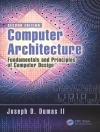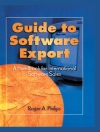This book constitutes the proceedings of the second International Workshop on Advanced Computational Intelligence (IWACI 2009), with a sequel of IWACI 2008 successfully held in Macao, China. IWACI 2009 provided a high-level international forum for scientists, engineers, and educators to present state-of-the-art research in computational intelligence and related fields. Over the past decades, computational intelligence community has witnessed t- mendous efforts and developments in all aspects of theoretical foundations, archit- tures and network organizations, modelling and simulation, empirical study, as well as a wide range of applications across different domains. IWACI 2009 provided a great platform for the community to share their latest research results, discuss critical future research directions, stimulate innovative research ideas, as well as facilitate inter- tional multidisciplinary collaborations. IWACI 2009 received 146 submissions from about 373 authors in 26 countries and regions (Australia, Brazil, Canada, China, Chile, Hong Kong, India, Islamic Republic of Iran, Japan, Jordan, Macao, Malaysia, Mexico, Pakistan, Philippines, Qatar, Republic of Korea, Singapore, South Africa, Sri Lanka, Spain, Taiwan, Thailand, UK, USA, Ve- zuela, Vietnam, and Yemen) across six continents (Asia, Europe, North America, South America, Africa, and Oceania). Based on the rigorous peer reviews by the Program Committee members, 52 high-quality papers were selected for publication in this book, with an acceptance rate of 36.3%. These papers cover major topics of the theoretical research, empirical study, and applications of computational intelligence.
Mục lục
Session 1. Neural Networks.- Multi Lingual Speaker Recognition Using Artificial Neural Network.- Modeling Huntington’s Disease Considering the Theory of Central Pattern Generators (CPG).- Prophetia: Artificial Intelligence for Travel Box® Technology.- Application Research of Local Support Vector Machines in Condition Trend Prediction of Reactor Coolant Pump.- Asymptotic Synchronization for Pulse-Coupled Oscillators with Delayed Excitatory Coupling Is Impossible.- Missing Data Imputation Through the Use of the Random Forest Algorithm.- Ubiquitous Middleware Using Mobility Prediction Based on Neuro-Association Mining for Adaptive Distributed Object System.- A Growing Algorithm for RBF Neural Network.- Fault Tolerance Based on Neural Networks for the Intelligent Distributed Framework.- Learning RNN-Based Gene Regulatory Networks for Robot Control.- Fault Detection for Networked Control Systems via Minimum Error Entropy Observer.- Discrete-Time Reduced Order Neural Observers.- A New Neural Observer for an Anaerobic Wastewater Treatment Process.- Prediction of Protein Subcellular Multi-localization by Using a Min-Max Modular Support Vector Machine.- Application of Multi Layer Perceptron Type Neural Network to Camera Calibration.- Hierarchical Neural Network Model for Water Quality Prediction in Wastewater Treatment Plants.- Third Generation Neural Networks: Spiking Neural Networks.- Session 2. Fuzzy Systems.- Choquet Fuzzy Integral Applied to Stereovision Matching for Fish-Eye Lenses in Forest Analysis.- Fuzzy OLAP: A Formal Definition.- Caller Behaviour Classification: A Comparison of SVM and FIS Techniques.- A Dual-Model Discrete-Time Jumping Fuzzy System Approach to NCS Design.- A Continuous-Time Recurrent Neurofuzzy Network for Black-Box Modeling of Insulin Dynamics in Diabetic Type-1 Patients.- Vague Query Based on Vague Relational Model.- Identification and Speed Control of a DC Motor Using an Input-Output Recurrent Neurofuzzy Network.- Hybrid Intelligent Control Scheme for an Anaerobic Wastewater Treatment Process.- Session 3. Evolutionary Algorithms.- Workability of a Genetic Algorithm Driven Sequential Search for Eigenvalues and Eigenvectors of a Hamiltonian with or without Basis Optimization.- An Improved Quantum Evolutionary Algorithm Based on Artificial Bee Colony Optimization.- Rough Approximation Operators with Hedges.- An Evolutionary Algorithm with Lower-Dimensional Crossover for Solving Constrained Engineering Optimization Problems.- Gene Regulatory Network Reconstruction of P38 MAPK Pathway Using Ordinary Differential Equation with Linear Regression Analysis.- A Novel Multi-threshold Segmentation Approach Based on Artificial Immune System Optimization.- Research on Improvement Strategies and Parameter Analysis of Ant Colony Algorithm for One-Dimensional Cutting Stock Problem.- Mixture of Experts with Genetic Algorithms.- Opposition-Based Particle Swarm Optimization with Velocity Clamping (OVCPSO).- Designing a Compact Genetic Algorithm with Minimal FPGA Resources.- Session 4. Intelligent Techniques and Applications.- Application of DNA Self-assembly on Maximum Clique Problem.- Modeling of the Relative Humidity and Control of the Temperature for a Bird Incubator.- A Novel Automatic Method on Diagnosing Movement Disorders.- The Fault Diagnosis of Electric Railway Traction Substation with Model-Based Diagnosis of Integration of FDI and DX Approaches.- A Single-Hop Active Clustering Algorithm for Wireless Sensor Networks.- A Transelevator Moving Inside of an Automatic Warehouse in Virtual Reality.- Improved AFT and Background-Mesh Generation for FEM with Applications in Microwave.- Application of Non-redundant Association Rules in University Library.- Global Structure Constraint: A Fast Pre-location for Active Appearance Model.- Bio-inspired Architecture for Visual Recognition of Humans Walking.- Computational Model for Electric Fault Diagnosis in Induction Motors.- Closed-Loop Identification of a Nonlinear Servomechanism: Theory and Experiments.- Dynamic Classifier Selection with Confidence Intervals.- Optimal Neuron-Controller for Fluid Triple-Tank System via Improved ADDHP Algorithm.- Method of Learning for Life Pet Artificial.- An Sliding Mode Control for an Elbow Arm.- Stabilization on a Physical Pendulum with Moving Mass.- Restricted Growth String for Video-Type Classification.












